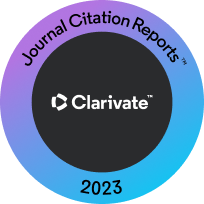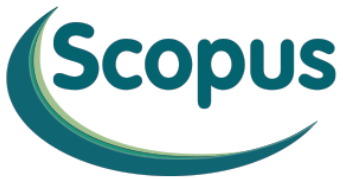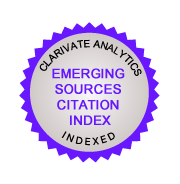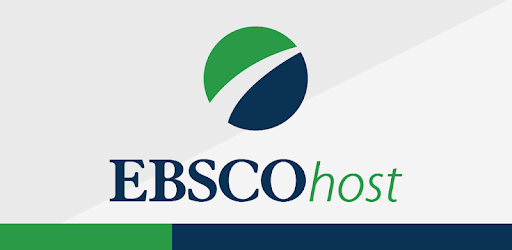DYNAMICS AND CAUSAL FACTORS OF TEAM SATISFACTION IN AN OPEN AND DISTANCE LEARNING COLLABORATIVE WRITING CLASS
DOI:
https://doi.org/10.32890/mjli2022.19.2.5Keywords:
collaborative learning, team dynamics, team acquaintance, team satisfaction, instructor support, ODL, writing lessonsAbstract
Purpose – Instructors and students are compelled to calibrate to overcome pedagogical, technological and social challenges posed by the rapid adaptation of open and distance learning (ODL) in view of the current global pandemic. Against this backdrop, this study explored the impact of team dynamics (TD), team acquaintance (TA) and instructor support (IS) in ensuring team satisfaction (TS) in an academic writing course in an online collaborative learning environment.
Methodology – This study employed a sequential mixed methods design. Quantitative data was obtained through a survey questionnaire from 67 students enrolled in an academic writing course based on convenience sampling from three different faculties of a Malaysian university. Subsequently, eight purposively selected students who represented each faculty and of varied language proficiency were interviewed in a focus group discussion (FGD) for in-depth feedback about the variables and how these impacted TS as a whole. The quantitative data was analysed using descriptive analysis, regression and chi square tests while thematic analysis was conducted accordingly on the qualitative data in addressing the specific research questions.
Findings – This study manifested a positive and significant correlation between TD and TS. The integral and supportive role of IS has been found to be substantially important in ensuring success in collaborative group work in ODL. Although qualitative data showed amicable relationship and cultural homogeneity, the quantitative findings did not indicate the significant role of TA in meeting the requirements of the course, that is, working collaboratively to accomplish academic writing tasks.
Significance – This study provides useful insights into the success of an online collaborative learning context. The findings also serve to guide educators in designing, delivering and navigating effective pedagogy in the ODL environment.
Metrics
References
Adarkwah, M. A. (2021). “I’m not against online teaching, but what about us?”: ICT in Ghana post Covid-19. Education and Information Technologies, 26(2), 1665–1685. https://doi.org/10.1007/s10639-020-10331-z
Arashpour, M., Lamborn, J., & Farzanehfar, P. (2020). Group dynamics in higher education: Impacts of gender inclusiveness and selection interventions on collaborative learning. In Claiming identity through redefined teaching in construction programs. https://doi.org/10.4018/978-1-5225-8452-0.ch003
Braun, V., & Clarke, V. (2019). Reflecting on reflexive thematic analysis. Qualitative research in sport, exercise and health, 11(4), 589-597. https://doi.org/10.1080/2159676X.2019.1628806
Chatterjee, R., & Correia, A. P. (2020). Online students’ attitudes toward collaborative learning and sense of community. American Journal of Distance Education, 34(1), 53–68. https://doi.org/10.1080/08923647.2020.1703479
Chowdhury, T. A., Roy, S., & Kabilan, M. K. (2021). Learner motivation in the EFL classrooms: Voices from a Bangladeshi university. Indonesian Journal of Applied Linguistics, 11(1), 221–232. https://doi.org/10.17509/ijal.v11i1.34618
Creswell, J. W. (2018). Education research planning, conducting, and evaluating quantitative and qualitative research (6thEd.). Boston: Pearson Publication.
Dhawan, S. (2020). Online learning: A panacea in the time of COVID-19 crisis. Journal of Educational Technology Systems, 49(1), 5–22. https://doi.org/10.1177/0047239520934018
Ezekoka, & Gertrude, K. (2015). Maximizing the effects of collaborative learning through ICT. Procedia - Social and Behavioral Sciences, 176, 1005–1011. https://doi.org/10.1016/j.sbspro.2015.01.571
Ghavifekr, S. (2020). Collaborative learning: A key to enhance students’ social interaction. Malaysian Online Journal of Educational Sciences, 8(4), 9–21. https://mjir.um.edu.my/index.php/MOJES/article/view/26394/12190
Hautala, J., & Schmidt, S. (2019). Learning across distances: An international collaborative learning project between Berlin and Turku. Journal of Geography in Higher Education, 43(2), 181–200. https://doi.org/10.1080/03098265.2019.1599331
Hodges, A. C., Moore, S., Lockee, B., Trust, T., & Bond, A. (2020). The difference between emergency remote teaching and online learning. Educause Review, March 27.https://er.educause.edu/articles/2020/3/the-difference-between-emergency-remote-teachingand-online-learning
Ibrahim, N., Shak, M. S. Y., Mohd, T., Ismail, N. A., Perumal, P. D., Zaidi, A., & Yasin, S. M. A. (2015). The importance of implementing collaborative learning in the English as a Second Language (ESL) classroom in Malaysia. Procedia Economics and Finance, 31(15), 346–353. https://doi.org/10.1016/s2212-5671(15)01208-3
Ismail, S. A. A., & Al Allaq, K. (2019). The nature of cooperative learning and differentiated instruction practices in English classes. SAGE Open, 9(2). https://doi.org/10.1177/2158244019856450
Jiang, D., & Zhang, L. J. (2020). Collaborating with ‘familiar’ strangers in mobile-assisted environments: The effect of socializing activities on learning EFL writing. Computers and Education, 150(February), 103841. https://doi.org/10.1016/j.compedu.2020.103841
Kaendler, C., Wiedmann, M., Rummel, N., & Spada, H. (2015). Teacher competencies for the implementation of collaborative learning in the classroom: A framework and research review. Educational Psychology Review, 27(3), 505–536. https://doi.org/10.1007/s10648-014-9288-9
Kamala, R., & Abdul Aziz, A. (2020). Systematic review: The use of collaborative learning to develop students’ guided writing and oral performance in poetry. International Journal of Academic Research in Progressive Education and Development, 9(2), 544–573.
https://doi.org/10.6007/ijarped/v9-i2/7663
Kaur, N. (2014). Teacher-led initiatives in supporting learner empowerment among Malay tertiary learners. Malaysian Journal of Learning and Instruction, 11, 101–126. http://www.ejournal.uum.edu.my/index.php/mjli/article/view/7667
Kaur, N. (2017). The role of peers and cultural tools in supporting autonomous learning behaviours among Malay tertiary learners. Pertanika Journal of Social Sciences and Humanities, 25(1), 61–80.
Kaur, N., & Bhatt, M. S. (2020). The face of education and the faceless teacher post COVID-19. Journal of Humanities and Social Sciences Research, 2(S), 39–48. https://doi.org/10.37534/bp.jhssr.2020.v2.ns.id1030.p39
Khan, R., Bashir, A., Basu, B. L., & Uddin, M. E. (2020). Emergency online instruction at higher education in Bangladesh during COVID-19: challenges and suggestions. Journal of Asia TEFL, 17(4), 1497–1506. https://doi.org/10.18823/asiatefl.2020.17.2.10.463
Khuzwayo, M. E. (2018). "Assessment of group work in initial teacher education and training." South African Journal of Education, 38(2), 1-11. https://doi.org/10.15700/saje.v38n2a1386
Ku, H. Y., Tseng, H. W., & Akarasriworn, C. (2013). Collaboration factors, teamwork satisfaction, and student attitudes toward online collaborative learning. Computers in Human Behavior, 29(3), 922–929. https://doi.org/10.1016/j.chb.2012.12.019
Laal, M., & Ghodsi, S. M. (2012). Benefits of collaborative learning. Procedia - Social and Behavioral Sciences, 31, 486–490. https://doi.org/10.1016/j.sbspro.2011.12.091
Lasmawan, I. W., & Budiarta, I. W. (2020). Vygotsky’s Zone of Proximal Development and the students’ progress in learning (A heutagogcal bibliographical review). Jurnal Pendidikan Indonesia (JPI), 9(4), 545–552. https://doi.org/10.23887/jpi-undiksha.v9i4.29915
Lew, G. K. (2020). Collaborative learning theory. E-Learning Essentials 2020. https://elearning2020.pressbooks.com/chapter/collaborative-learning-theory/
Loh, R. C.-Y., & Ang, C.-S. (2020). Unravelling cooperative learning in higher education. Research in Social Sciences and Technology, 5(2), 22–39. https://doi.org/10.46303/ressat.05.02.2
Ministry of Education Malaysia (2013). Malaysia Education Blueprint 2013-2025.
Nagavci, M. H. (2020). Teaching English for Specific Purposes – Understanding the teacher’s role in ESP teaching. In E. Hajrizi (Ed.), Proceedings of the 9th UBT International Conference on Language and Culture (pp. 18–23). https://knowledgecenter.ubt-uni.net/conference/2020/2020booksofproceedings/8
O.Nyumba, T., Wilson, K., Derrick, C. J., & Mukherjee, N. (2018). The use of focus group discussion methodology: Insights from two decades of application in conservation. Methods in Ecology and Evolution, 9(1), 20–32. https://doi.org/10.1111/2041-210X.12860
Olesen, M. (2020). Cooperative collaboration in the hybrid space of google docs based group work. Education Sciences, 10(10), 1–13. https://doi.org/10.3390/educsci10100269
Qureshi, M. A., Khaskheli, A., Qureshi, J. A., Raza, S. A., & Yousufi, S. Q. (2021). Factors affecting students’ learning performance through collaborative learning and engagement. Interactive Learning Environments, 0(0), 1–21. https://doi.org/10.1080/10494820.2021.1884886
Ruys, I., Van Keer, H., & Aelterman, A. (2014). Student and novice teachers’ stories about collaborative learning implementation. Teachers and Teaching: Theory and Practice, 20(6), 688–703. https://doi.org/10.1080/13540602.2014.885705
Samat, F., & Abd Rahman, N. N. (2019). The perceptions on group work among Malaysian preuniversity gifted students. e-Bangi, 16(5), 1–7. https://ejournal.ukm.my/ebangi/article/view/33485
Shi, J., & Liu, L. (2013). Application of a dynamic collaborative learning oriented knowledge model. Proceedings of the 2nd International Symposium on Computer, Communication, Control and Automation (ISCCCA-13), 175–178. https://doi.org/10.4028/www.scientific.net/AMM.347-350.3002
Sofroniou, A., & Poutos, K. (2016). Investigating the effectiveness of group work in Mathematics. Education Sciences, 6(3), 1–15. https://doi.org/10.3390/educsci6030030
Taherdoost, H. (2019). What is the best response scale for survey and questionnaire design: Review of different lengths of rating scale/ attitude scale / likert scale. International Journal of Academic Research in Management (IJARM), 8(1), 1–10. www.elvedit.com
Tang, T., Vezzani, V., & Eriksson, V. (2020). Developing critical thinking, collective creativity skills and problem solving through playful design jams. Thinking Skills and Creativity, 37, 100696. https://doi.org/10.1016/j.tsc.2020.100696
The Star (2022, January 31). Gearing up for a new reality in education. https://www.thestar.com.my/starpicks/2022/01/31/gearing-up-for-a-new-reality-in-education
Tseng, H., Wang, C., Ku, H.-Y., & Sun, L. (2009). Key factors in online collaboration and their relationship to teamwork satisfaction. Quarterly Review of Distance Education, 10(2), 195-195-206,251-252. http://search.proquest.com/docview/231183153?accountid=13044
Van Leeuwen, A., Janssen, J., Erkens, G., Brekelmans, M. (2013). Teacher interventions in a synchronous, co-located CSCL setting: Analyzing focus, means, and temporality. Computers in Human Behavior, 29(4) 1377-1386. https://doi.org/10.1016/j.chb.2013.01.028
Walker, E. R., Lang, D. L., Caruso, B. A., & Salas-Hernandez, L. (2020). Role of team dynamics in the learning process: A mixed-methods evaluation of a modified team-based learning approach in a behavioral research methods course. Advances in Health Sciences Education, 25, 383–399. https://doi.org/10.1007/s10459-019-09931-3
Warsah, I., Morganna, R., Uyun, M., Hamengkubuwono, H., & Afandi, M. (2021). The impact of collaborative learning on learners’ critical thinking skills. International Journal of Instruction, 14(2), 443–460. https://doi.org/10.29333/iji.2021.14225a
Whittle, C., Tiwari, S., Yan, S., & Williams, J. (2020). Emergency remote teaching environment : A conceptual framework for responsive online teaching in crises. Information and Learning Sciences, 121(5/6), 311–319. https://doi.org/10.1108/ILS-04-2020-0099
Woelk, C. (2019). Better together : Leveraging group dynamics in conversational English classes. In J. Kimball & D. Shaffer (Eds.), KOTESOL PROCEEDINGS 2019 (pp. 257–263). KOTESOL. https://koreatesol.org/content/kotesol-proceedings-2019
Yusuf, Q., Jusoh, Z., & Yusuf, Y. Q. (2019). Cooperative learning strategies to enhance writing skills among second language learners. International Journal of Instruction, 12(1), 1399–1412. www.e-iji.net
Additional Files
Published
How to Cite
Issue
Section
License
Copyright (c) 2022 Malaysian Journal of Learning and Instruction

This work is licensed under a Creative Commons Attribution 4.0 International License.




























